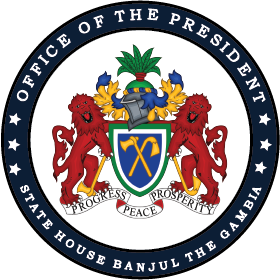CONTENT
The National Road Safety Strategy (2021–2030) aims to eliminate road traffic fatalities and serious injuries in The Gambia by implementing a "Safe System" approach to improve road infrastructure, enforcement, sensitization, and post-crash care.
Specific Objectives
-
Leadership and Coordination: Strengthen governance systems and establish dedicated road safety agencies.
-
Capacity Building: Enhance technical skills and leadership capacity in road safety across key institutions.
-
Data Collection and Analysis: Create robust crash data systems for effective monitoring and decision-making.
-
Regulatory Reform: Improve safety laws addressing key behaviors (e.g., speeding, drink driving) and enhance licensing systems.
-
Pedestrian Safety: Focus on infrastructure improvements like footpaths and speed humps to protect non-motorized road users.
-
Sensitization: Raise awareness about road safety behaviors and integrate road safety into educational curriculums.
-
Enforcement: Equip law enforcement with tools and strategies to deter unsafe driving and ensure compliance with traffic laws.
-
Post-Crash Response: Strengthen emergency medical systems, trauma care, and rehabilitation services for road crash victims.
SUMMARY
The National Road Safety Strategy (2021–2030) addresses the increasing road traffic fatalities in The Gambia, which impose significant economic and social costs. The strategy adopts a "Safe System" approach focused on creating safer roads, vehicles, and user behaviors. Key targets include reducing fatalities and serious injuries by 50% by 2030 through infrastructure improvements, enforcement campaigns, data systems, and community awareness programs.
Strategic actions include:
-
Enhancing pedestrian safety through footpaths and speed controls.
-
Reforming traffic laws to address unsafe behaviors and improve driver licensing standards.
-
Establishing a Road Safety Committee and working group to lead implementation efforts.
-
Collaborating with sectors such as health, education, and finance for multisectoral solutions.
Implementation will be guided by annual action plans, monitored through performance indicators, and funded through mechanisms like the Road Fund and external partnerships. The ultimate vision is achieving zero road fatalities and serious injuries, transforming road safety into a cornerstone of national development.
-
Ministry of Public Service
6 documents -
Office of The Vice President
3 documents -
Ministry of Agriculture, Livestock and Food Security
8 documents -
Ministry of Basic and Secondary Education
2 documents -
Ministry of Defence
3 documents -
Ministry of Environment, Climate Change and Natural Resources
9 documents -
Ministry of Finance and Economic Affairs
11 documents -
Ministry of Foreign Affairs and International Cooperation
1 document -
Ministry of Health
30 documents -
Ministry of Higher Education, Research, Science and Technology
3 documents -
Ministry of Communications and Digital Economy
24 documents -
Ministry of Interior
3 documents -
Ministry of Justice
1 document -
Ministry of Petroleum and Energy
5 documents -
Ministry of Trade Industry and Employment
8 documents -
Ministry of Transport Works and Infrastructure
3 documents -
Ministry of Tourism and Culture
3 documents -
Ministry of Women, Children and Social Welfare
12 documents -
Ministry of Youths and Sports
2 documents -
Ministry of Land and Regional Government
1 document -
Ministry of Fisheries and Water Resources
3 documents -
Office of The President
0 documents

